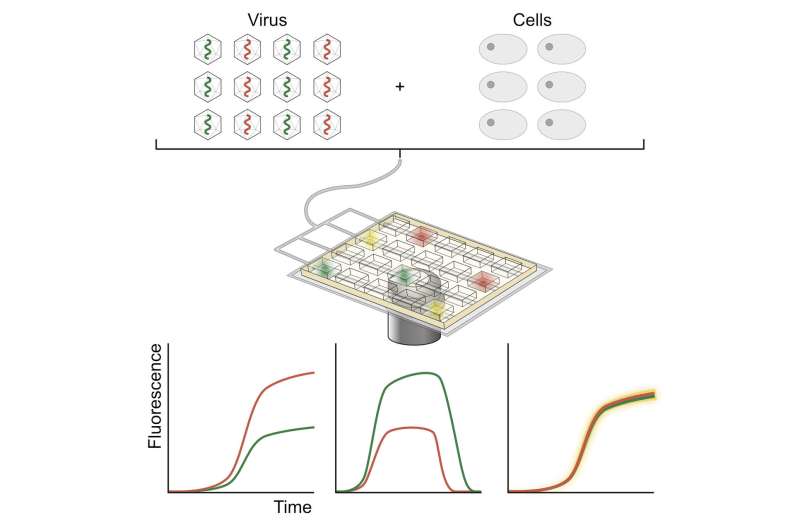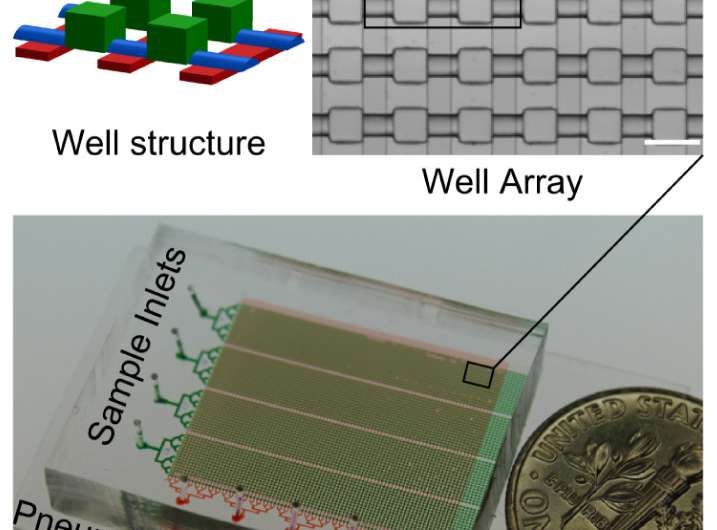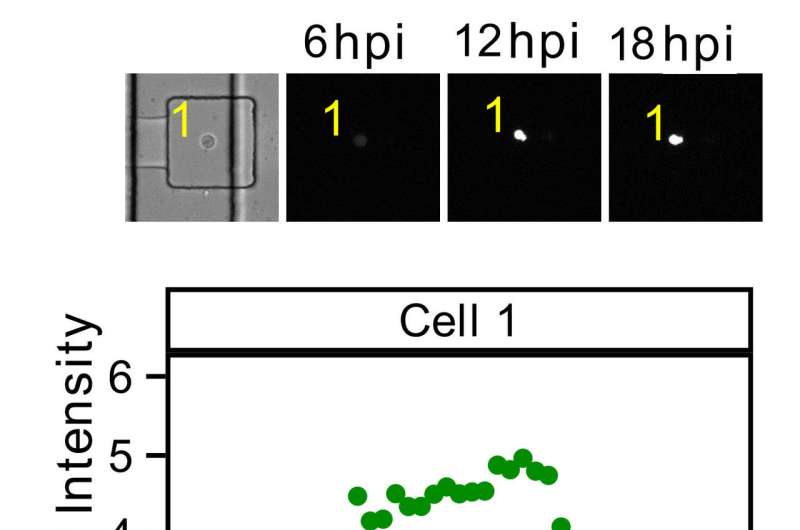Survival of the least-fit: Antiviral drug selectively targets the nastiest viruses

An antiviral drug that inhibits a virus' replication machinery selectively targets the most aggressive viruses, according to new research that looked at the infection of individual cells by a virus and the consequence of antiviral intervention. This new insight into the dynamics of an infection and the mechanism of an antiviral drug could not be seen by the typical approach of studying populations of cells. Researchers at Penn State, Duke University, and the University of Texas at Austin have developed a high-throughput system to study large numbers of single, infected cells that facilitated the new insight. A paper describing the results of the research appears in the journal Cell Reports.
"Traditionally, viruses and antiviral drugs are studied by infecting a population of cells with a population of viruses," said Craig Cameron, professor and holder of the Eberly Family Chair in Biochemistry and Molecular Biology at Penn State and an author of the paper. "Both the cells and viruses vary somewhat individually, so the results that we get are averages over the population. Averages are fine when interested only in the efficacy of a drug, but studies on the single-cell level can tell you if particular members of the population are more susceptible to the treatment and when during the virus life cycle the treatment acts."
To study the dynamics of a viral infection on individual cells, the researchers used a modified version of the poliovirus that produces a green-fluorescent protein. As a virus replicates in a cell, more and more of the green-fluorescent protein is produced, which the researchers can monitor. In order to study enough individual cells to get reliable, statistically significant results, the researchers built a microfluidic device that allows them to monitor up to 6,400 cells simultaneously.

"We treated cells infected with poliovirus with 2'-C-methyladenosine, a viral polymerase inhibitor that stops the virus from replicating its genome—a necessary step for the virus to produce more viruses," said Jamie J. Arnold, an associate research professor at Penn State and another author of the paper. "This drug helped pave the way for the development of sofosbuvir, an antiviral drug that is part of the cocktail of drugs that is used to cure hepatitis C. As expected from previous studies, the drug eliminated about 50% of the infections, but we were surprised to see that the drug was most effective against viruses that were growing the fastest, something we could have never seen if we weren't looking at cells individually."
The researchers also followed the time course and dynamics of viral infections in individual cells. They studied the time at which the virus began to replicate, the rate of replication, and the maximum level of virus growth. By studying cells individually, the researchers were able to show which of these factors could be affected by slight variation between the cells and which could be affected by variation in the viruses.

"Some aspects of the dynamics of an infection seem to be controlled more by variation that exists between individual cells but other aspects are due to genetic variation within the virus population," said Cameron. "With our new tool, we can begin to identify the specific factors that vary between the cells or between the viruses that are responsible for the different outcomes. Understanding these mechanisms will allow us to be smarter in the way we design new antiviral drugs."
More information: Feng Guo et al, Single-Cell Virology: On-Chip Investigation of Viral Infection Dynamics, Cell Reports (2017). DOI: 10.1016/j.celrep.2017.10.051
Journal information: Cell Reports
Provided by Pennsylvania State University



















